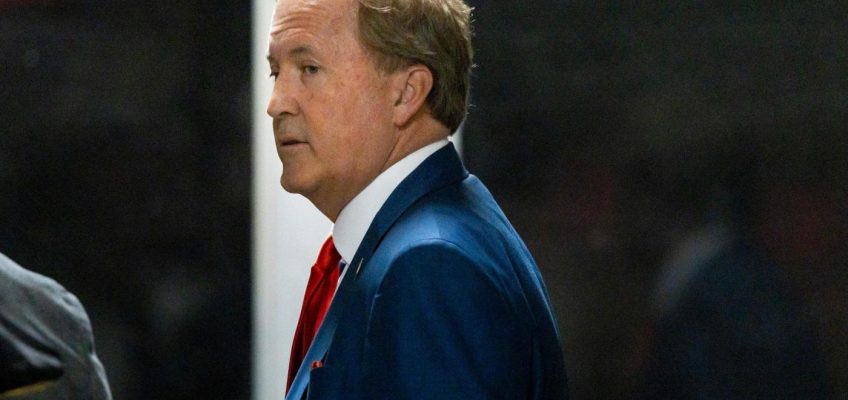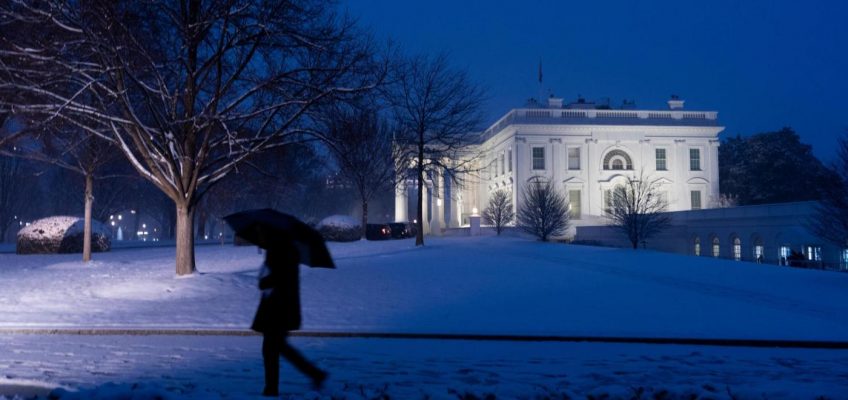By ASHRAF KHALIL
WASHINGTON, D.C. (AP) — The moment that local officials in Washington have been dreading for months is finally here. President Donald Trump, one month into his second term, has publicly returned to one of his longtime talking points: a federal takeover of the District of Columbia.
New arrivals at Guantanamo Bay are Venezuelan immigrants with final deportation orders
Once off the table, bills to charge women who get abortions with murder get votes before failing
In the Trump administration, nearly every major department is an immigration agency
The 45 companies on the MAGA anti-DEI hit list
As Melania Trump returns to the White House, she’s winning Chinese fans
It would take some doing, though — including, literally, an act of Congress. But the issue bubbled up again this week, the latest in the blizzard of initiatives that have surfaced since Trump took the oath of office Jan. 20.
Whether it was just a reminder that the president possesses the power to set off alarms with an off-the-cuff remark or by directing his administration to take concrete steps to make it happen remains to be seen. As with efforts to rename the Gulf of Mexico, make Canada the 51st state or make Greenland a U.S. territory, a lot depends on what happens next.
Here’s a look at some of the questions surrounding the issue:
Could this really happen?
Yes, but Trump can’t do it alone. Congress, with both houses controlled by Republicans, could absolutely vote to repeal the 1973 Home Rule Act. That would be a deeply controversial vote which would likely test the strength of the three-seat GOP majority in the House of Representatives.
Why now?
That’s a bit of a mystery. Mayor Muriel Bowser has set a conciliatory tone ever since Trump was elected again. She traveled to Mar-a-Lago to meet with Trump, and said she looked forward to working with the new administration and emphasized the common-ground issues — such as their mutual desire to get federal workers back to their offices.
Trump, in his brief comments on Air Force One, said he and Bowser “get along great.”
Bowser responded with a posting on X, declaring D.C. “a world-class city” and listing the District’s virtues.
Trump was also responding to a specific question from a reporter, so it’s possible this was an off-the-cuff comment and not indicative of an immediate priority issue for him.
What can Trump do unilaterally?
Local government officials have been quietly predicting some sort of executive order imposing stiffer criminal penalties or a crackdown on homeless encampments, but a full “ takeover” would still require an act of Congress.
He could theoretically take over the Metropolitan Police Department — something that was considered during the 2020 mass protests over the murder of George Floyd by Minneapolis police. Justin Hansford, a professor at D.C.’s Howard University School of Law, said such a step would need some sort of “justifying emergency.” Trump’s perspective on what constitutes such an emergency, Hansford said, “would absolutely be challenged in court.”
The Capitol is seen framed through a window in the Cannon House Office Building on Capitol Hill in Washington, Thursday, Feb. 13, 2025. (AP Photo/J. Scott Applewhite)
How bad are the problems he mentioned?
Violent crime rates, particularly homicide and car jacking, legitimately spiked in 2023, leaving officials publicly scrambling for answers. Those numbers came down significantly in 2024, in the face of a new public safety bill and a concerted MPD crackdown. They’re up a bit so far in 2025 but still down from their recent peak but also well below the late 1990s when D.C. regularly led the nation in per-capita homicides.
Graffiti in D.C. is common but not exactly a civic crisis. The city has worked to both clean up graffiti hotspots and transform young taggers into publicly sponsored muralists.
Multiple homeless encampments are a fact of life in Washington, but the District government is partially handcuffed by the fact that large swaths of the public greenspace, including many parks and traffic circles, are under the jurisdiction of the National Park Service. The last few years have settled into a cyclical dynamic, with homeless encampments slowly growing into mini tent cities on NPS land, followed by a mass clearing with bulldozers once or twice a year.
What’s the history between Trump and DC?
It’s not positive.
During Trump’s turbulent first term, he and the local government publicly sparred multiple times — in tones ranging from playful to deeply personal. When Trump floated the idea of a massive July 4 military parade complete with tanks rolling through the streets, the D.C. Council publicly mocked him.
Trump accused Bowser of losing control of her city during protests over the murder of George Floyd. He backed down from a threat to take over the MPD, and eventually declared his own multi-agency lockdown that included low-flying helicopters buzzing protesters. Bowser responded by having “Black Lives Matter” painted on the street in giant yellow letters one block from the White House.
Trump’s feelings remained intense during the four years after leaving office. He repeatedly promised a federal takeover while on the campaign trail as part of an effort to stoke fears about violence in U.S. cities generally. In August 2023, when he briefly came to town to plead not guilty on charges of trying to overturn his 2020 electoral loss to former President Joe Biden, Trump blasted the capital city on social media, calling it a “filthy and crime ridden embarrassment to our nation.”
What about Congress?
Activist Republicans in Congress have long used the House Oversight Committee as a forum to employ their power over the local government. During the crime spike in 2023, Bowser and members of the D.C. Council were regularly summoned for inquiries before the committee. That year, Congress also, for the first time in decades, fully overturned a D.C. law when it repealed a rewrite of the D.C. criminal code. But that required Congressional Democrats to join in, and then-President Biden to sign off on it.
Members of Congress have also repeatedly used budget riders to alter D.C. laws in minor ways, targeting everything from marijuana legalization to the city’s use of traffic cameras.
As an indication of just how personal and petty this dynamic has become, the bill previously introduced in Congress proposing to repeal D.C. home rule was titled to produce an antagonistic acronym. It’s called the Bringing Oversight to Washington and Safety to Every Resident Act or the BOWSER Act.
Is there any silver lining for D.C.?
Perhaps the most optimistic interpretation among D.C. officials is a quiet belief that Trump and Congress have no actual interest in the hassle that comes with managing a city of 700,000 residents — more populous that two U.S. states.
They expect a wave of budget riders from GOP members of Congress emboldened by Trump’s statements. But some observers believe Congress will stop short of assuming the responsibility and liability that would come with a full federal takeover.
“As a lawyer, I’m thinking about who I would sue if there’s a police brutality case,” said Hansford, the Howard law professor. “I don’t think Congress wants to deal with all that.”




